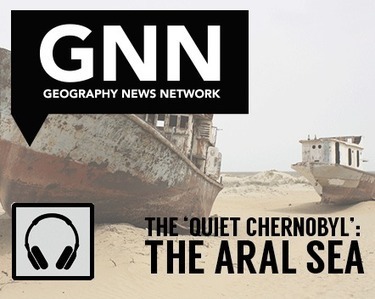Hidden beneath the 245,000 square miles that make up the Great Plains, resides a lake that’s one of our greatest water assets: The Ogallala Aquifer. Haven’t heard of it? Farming the plains would be unprofitable at best without it, as shown by the Dust Bowl of the 1930s. At the time, the aquifer’s existence was known, but the technology to tap into it wasn’t.
Get Started for FREE
Sign up with Facebook Sign up with X
I don't have a Facebook or a X account
 Your new post is loading... Your new post is loading...
 Your new post is loading... Your new post is loading...
|

Kevin Cournoyer's curator insight,
May 6, 2015 10:49 AM
Both this podcast and its title are very interesting. Describing the Aral Sea crisis as a "Quiet Chernobyl" highlights the seriousness of what has happened to the Aral Sea over the previous decades. Though the Aral Sea was not the site of a catastrophic nuclear meltdown, what has happened there is just as harmful to the environment and the population in the surrounding area. The difference between what happened with the Aral Sea and what happened at Chernobyl, however, is that the Aral Sea crisis was avoidable. Chernobyl was an accident, the Aral Sea was not. The warnings of what was to come were clearly present at the Aral Sea, but they were ignored.
This shows how the balance between man and nature is a precarious one that must be monitored closely and heeded constantly. As an oasis in one of the world's driest deserts, the Aral Sea had vast amounts of potential to help facilitate farming and generally help to make life in the area possible. People saw this potential and made use of it. This was not wrong in and of itself. What was wrong was that this potential was overused, with no regards for the long-term effects that it would have on the ecosystem, the climate, and the way of life in the region. The natural geography of a place is very important and can be used by human beings to achieve great things, but as soon as we stop caring about sustainability and future generations, those tools fail and disappear, causing long-term problems that can never be fixed. 
Chris Costa's curator insight,
October 19, 2015 12:48 PM
The Aral Sea is just one example of an alarming trend happening worldwide, as ill-advised irrigation efforts continue to distort natural geographical formations, climate, and ecosystems. The loss of the Aral is damaging on so many fronts; the loss of an entire ecosystem within its waters, the damages done to the surrounding ecosystems as a result of climate changes and reduction in the food chain directly related to the Sea's disappearance, and the economic repercussions for the people who live in the region. Once a bustling maritime community of trade, the region now lies dormant, the economic realities for the people who once relied on the Sea's waters as dire as the land is dry. Ship hulls line the ground like animal carcasses, the remains of centuries of human life- a stark reminder that man often takes his power too far, too fast. With other large bodies of water facing the same fate in other regions, it is best hoped that the Aral and its ghost crews that now dominate the landscape serve as a reminder to human civilization that, for all our advances, we cannot play "God" and face no consequences. |











